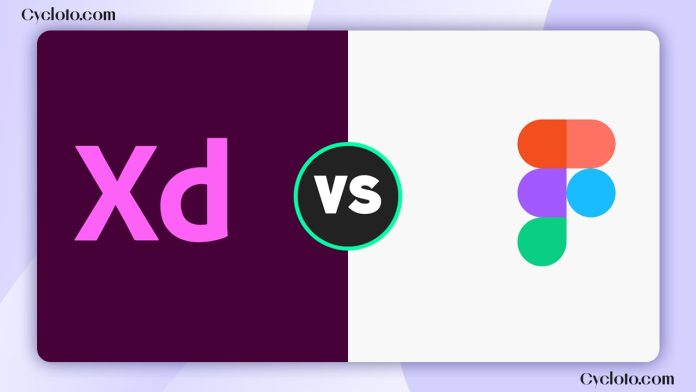Adobe XD vs Figma which is better for UI UX design? Both tools are popular for prototyping and user interface design and both offer a user-friendly interface that makes it easy for new users to get started.
Adobe XD Vs Figma At a Glance:
Figma
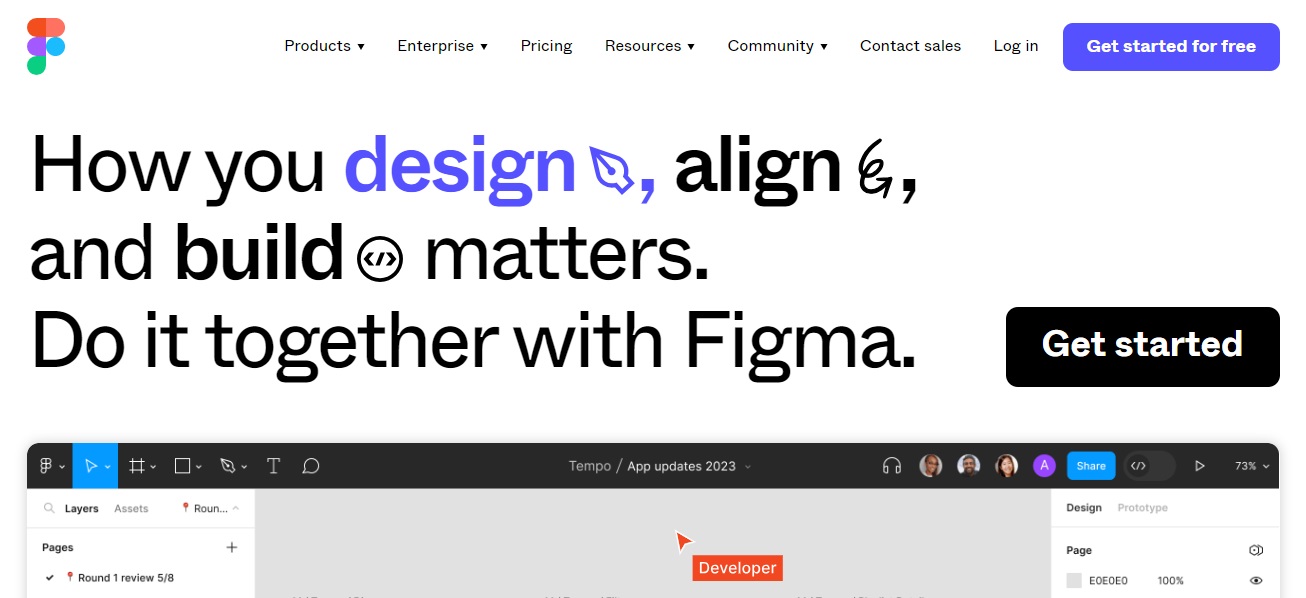
Figma is a handy online tool for designing User Interfaces (UI) and User Experience (UX). Designers and developers love using Figma because it’s cloud-based, meaning you can access it from any device with the internet. Since it’s web-based, you don’t even need to download any software.
Figma lets you create, edit, and share designs easily. Packed with powerful features, it’s a top pick for both teams and solo designers. Perfect for remote teams, it enables real-time collaboration on designs. Plus, multiple people can work on the same design file simultaneously, fostering seamless teamwork.
A vast library of design assets is also included with Figma, such as typography, icons, and vector graphics. This makes it easy for designers to produce high-quality designs that look polished and professional.
Since its launch in 2016, Figma has soared in popularity among both professionals and students. What’s more, it offers a free version with plenty of useful features, perfect for newcomers to design or those working on personal projects.
Adobe XD
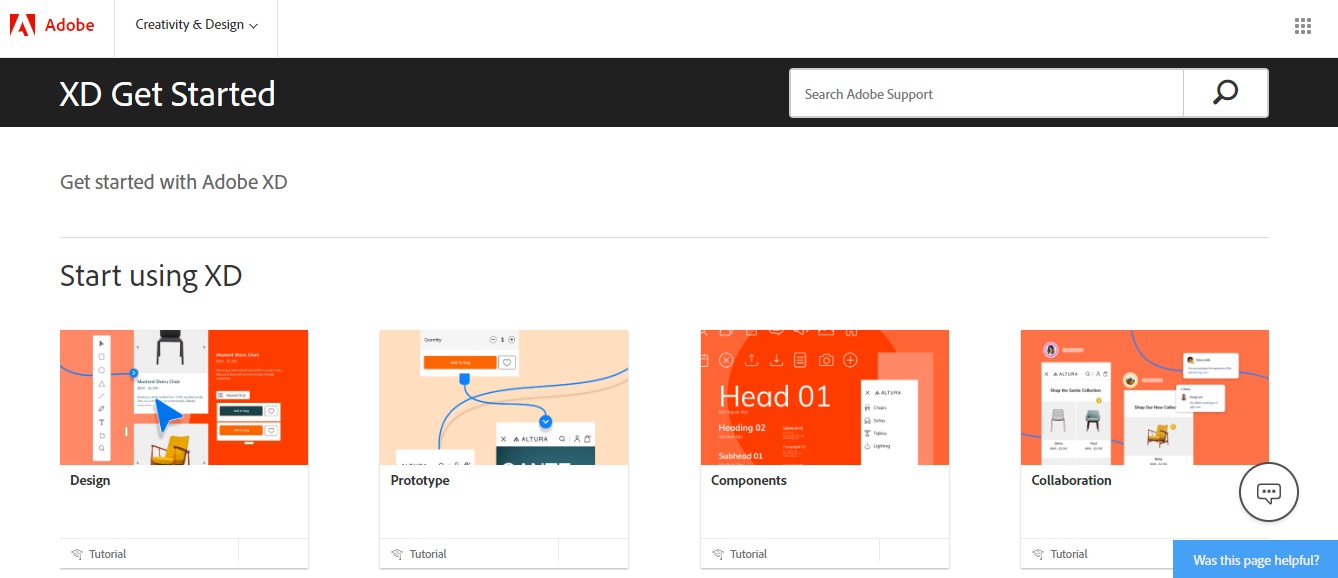
Adobe XD is a vector design tool developed by Adobe Systems. It is used for creating and testing user experiences for websites and mobile applications.
Adobe XD has gained widespread popularity in recent years because of its user-friendly interface which also makes it easy for designers of all levels to create professional-looking prototypes and designs. With Adobe XD designers can easily create wireframes which are simple outlines of a website or app, to help visualize and test its layout and structure.
Once the wireframes have been created designers can enhance their prototypes by adding images, buttons and text to create a more comprehensive experience for their users. Aside from its design tools, Adobe XD offers robust collaboration and sharing functionality as well.
One of the key benefits of Adobe XD is that it integrates with other Adobe Creative Cloud products, so designers can import assets from other tools into prototypes and streamline their workflow.
Adobe XD VS Figma The Differences
When it comes to the difference between Adobe XD vs Figma, both are widely popular and both have almost similar features and capabilities but there are some key differences between the two that make them better suited for different types of projects and teams.
Collaboration is one of the main differences between Adobe XD VS Figma. Figma is a cloud-based tool that allows multiple people to work on the same design file at the same time and on the other hand, Adobe XD is a desktop-based tool that requires users to save and share their designs through the Creative Cloud, which can make collaboration more difficult.
There is also a difference in how prototyping is handled between the two tools. The prototyping functionality in Figma is limited, but it allows designers to create simple animations and interactions. On the other hand, Adobe XD has a more robust prototyping feature that allows designers to create interactive prototypes that can be tested and shared with stakeholders.
Regarding design assets, Adobe XD offers a robust feature set, including typography, icons, and vector graphics that can be customized for any project. Although Figma has fewer design assets, its focus lies more on collaboration. Figma offers a free version, while Adobe XD is a premium product. Figma benefits from a vibrant community of designers who share resources, plugins, and best practices, enhancing collaboration and expanding its capabilities.
Choosing Between Figma vs Adobe XD
Choose Figma for real-time collaboration on designs, especially if you have a large design system or many reusable components. It’s great at organizing and managing these elements, and its free version offers a lot, making it budget-friendly.
Choose Adobe XD if you’re already using Adobe Creative Cloud apps like Photoshop or Illustrator, as XD integrates smoothly with them. It’s ideal if you prioritize prototyping features, with advanced options like auto-animation and voice prototyping. Plus, its interface is user-friendly and familiar to those accustomed to Photoshop or Illustrator.
Differences Between Figma Free and Paid Versions
In recent years, Figma has gained a lot of attention for its ease of use and collaborative features. The free version of Figma is worth considering because it provides access to many core platform features, including design tools, prototyping tools, and collaboration features.
But Figma’s free version does come with some limitations. One of the main limitations of the free version of Figma is that it only allows three projects to be open at one time. This can be a problem for professional designers who need to work on multiple projects simultaneously.
Besides the free version, Figma offers a paid version called the Professional Plan, which includes additional features and removes limitations. Among its benefits, the Professional Plan grants users access to all design assets and also allows them to open an unlimited number of projects at a time.
However, the free version of Figma is a cost-effective option for individuals and small teams and this can also help you save money compared to Adobe XD which requires subscriptions.
Adobe XD vs Figma pricing
Adobe XD comes with an Adobe Creative Cloud subscription, priced at $59.99 per month. This subscription includes 20+ apps like Photoshop, Illustrator, Premiere Pro, and more. However, the previous standalone plan for $9.99/month is no longer available. So, if you only want to use Adobe XD, you’ll need to pay $59.99, which might not be worth it for those on a tight budget.
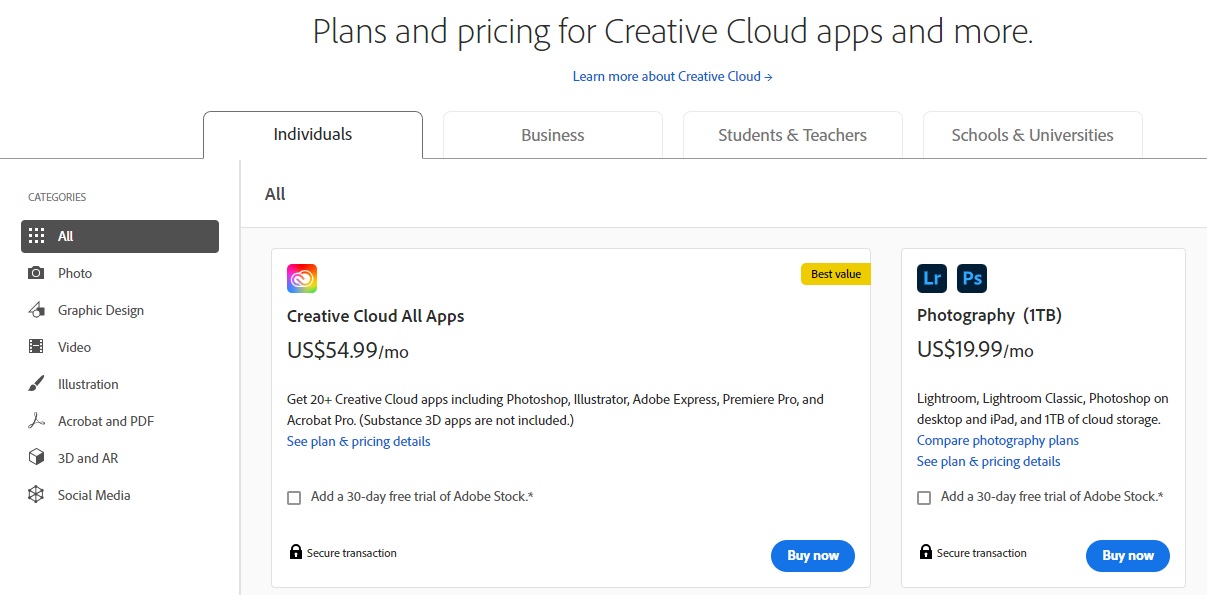
On the other hand, Figma offers several plans. Here is an overview of Figma’s pricing plans:
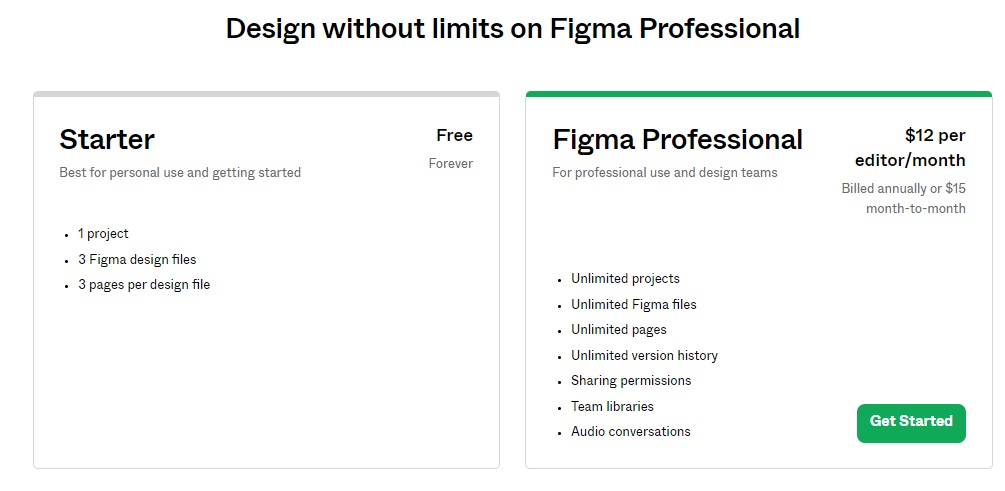
Professional Plan: Figma’s Professional plan starts at $12 per user per month, billed annually. With advanced design tools, collaborative features, and file-sharing options, this package is ideal for teams and individuals.
Organization Plan: Figma’s Organization plan starts at $45 per user per month, billed annually. The plan offers advanced design and collaboration tools, file-sharing options, and additional security and collaboration features for larger organizations.
Enterprise Plan: For organizations with specific security and collaboration requirements, Figma’s Enterprise Plan is a custom solution. This plan starts at $75 per Figma editor and $5 per FigJam editor per month, billed annually. Enterprise plan subscribers have access to all of Figma’s features, as well as additional security and collaboration features.
In the end, Adobe XD vs Figma Which Is Better?
It depends on factors like budget and usability. Both are powerful design tools with a wide range of features. However, if you’re starting your career as a UI/UX designer, Figma is a solid choice. It’s user-friendly and used by both beginners and industry professionals for its real-time collaboration, auto layout for responsive design, and extensive plugin collection.
Adobe XD is also a powerful tool favored by industry experts, especially for its deep integration with Adobe Creative Cloud. For designers already using Adobe programs like Photoshop and Illustrator, XD offers seamless integration, making asset transfer easy. While Figma has strong prototyping features, Adobe XD takes it further with features like voice prototyping and integration with developer tools, allowing for more complex interactive prototypes. However, XD is pricier, but if you’re already invested in Adobe Creative Cloud, it’s worth considering.
Hopefully, this helps you decide which one to choose. If you have any questions, feel free to ask. And if you’re interested in a UI/UX career, check out our blog for more insights.

